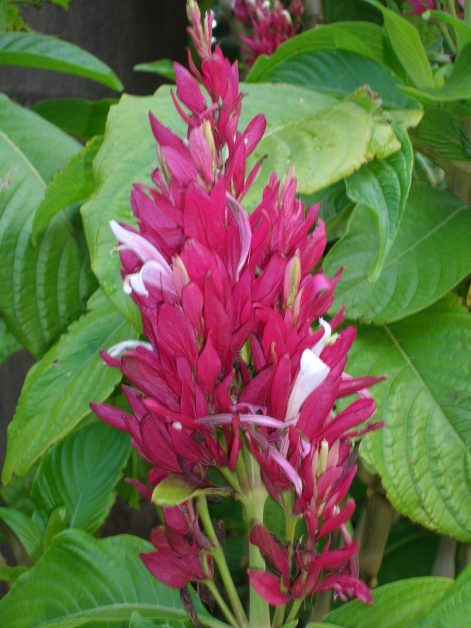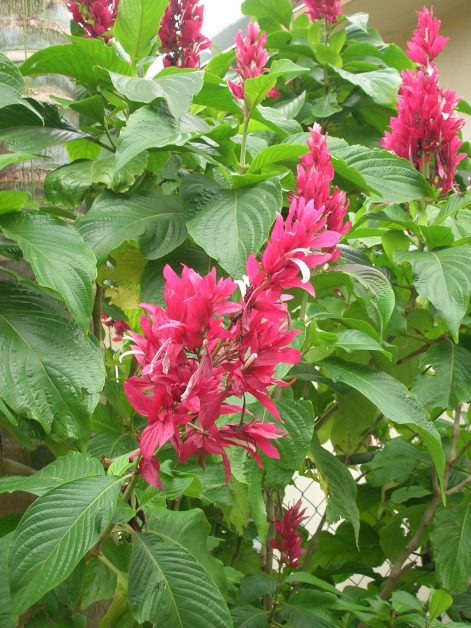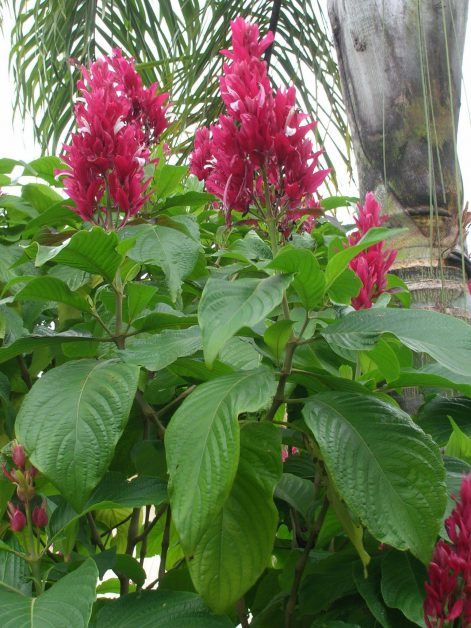Brazilian Red Cloak Stars in the Winter Landscape
Brazilian Red Cloak (Megaskepasma erythrochlamys) was included in a June 2015 article on this website about hedge material, but it merits special attention now that it is blooming spectacularly.
This single-species genus is a New World native that occurs in Costa Rica, Nicaragua, El Salvador, and Venezuela, but not really Brazil. It is capable of reaching 10-15 ft. in height and 10 ft. in width, but can be maintained as a more compact plant through occasional pruning – even hard pruning – and by “deadheading,” which means simply cutting off spent flower stalks. Possessed of large, glossy, ribbed leaves, it is an attractive plant even when not in bloom.
Brazilian Red Cloak is a remarkably fast grower, capable of hitting the 6-8 ft. mark in less than a year. This trait makes it a fine screening material. But the star quality of the species is still its bloom. During the winter months, the plant produces foot-high spiked inflorescences. While its flowers are a nice white, what accounts for the plant’s showiness are the scarlet to purple bracts that dominate the inflorescence.
And what makes Megaskepasma especially valuable as a flowering plant is that it does not require full sun to achieve optimum performance. In fact, too much sun may bleach its overall appearance. The species prefers ample moisture, so mulching during the dry season is advisable. However, it is not especially particular about soil composition, so long as it is well-drained.
Richard Lyons’ Nursery stocks Brazilian Red Cloak in 3-gal. containers.
- Megaskepasma erythrochlamys (Brazilian Red Cloak)
- Megaskepasma erythrochlamys (Brazilian Red Cloak)
- Megaskepasma erythrochlamys (Brazilian Red Cloak)


